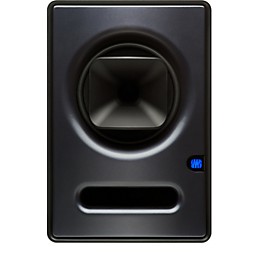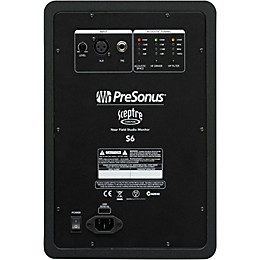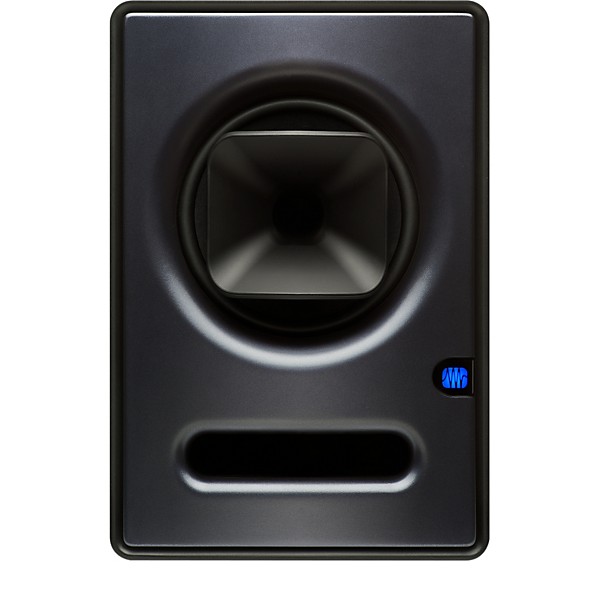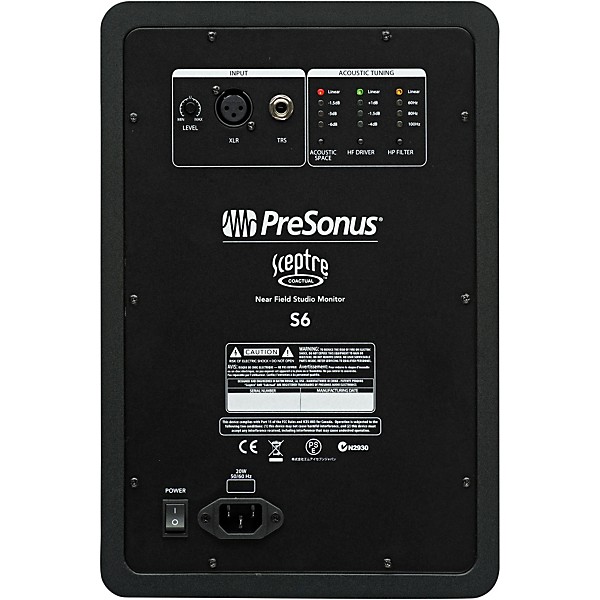- Popular Brands
Open Box
Open Box PreSonus Sceptre S6 - 2-way 6.5" Coaxial Nearfield Studio Monitor with DSP Processing Level 1
Videos (2)
View All

PreSonus—Sceptre Studio


View Video

 Description
Description
PreSonus CoActual technology—the core of every Sceptre series studio monitor—is the combination of custom transducers in a state-of-the-art coaxial design with heavy-duty DSP running TQ algorithms.
The Coaxial Conundrum
Speaker designers have long been aware that coaxial designs offer the advantages of a single point source for a consistent acoustic center and a symmetrical dispersion pattern. But until now, designing coaxial systems without a variety of acoustic anomalies has been extremely expensive. Solving the problems involved in coaxial designs requires massive amounts of DSP and subtle, sophisticated transducer design, which is why such systems have, in the past, been limited to very high-end systems with external processors.
However, Fulcrum Acoustic's amazing, cutting-edge technology has allowed PreSonus to overcome the usual design problems of coaxial systems while taking advantage of coaxial's unique properties. Thanks to custom transducers and TQ algorithms designed by Fulcrum's Dave Gunness, Sceptre CoActual monitors deliver clarity and coherence that has previously only been available in ultra-high-end systems.
The Royal Sceptre
The Sceptre series includes two models. The Sceptre S8 CoActual Studio Monitor combines an 8-inch low/mid-frequency driver and a 1" (25 mm), horn-loaded, high-frequency transducer into a single coaxial unit with aligned voice coils. This Sceptre S6 uses the same technology and design as the S8 but with a 6.5" low/mid-frequency driver. Both models have front-firing acoustic ports.
The systems are biamplified: Each transducer is powered by a 90W RMS, Class-D power amp with an internal heat sink. Each Sceptre has its own internal power supply with IEC connector and a power switch with on/off LED.
All Sceptre Series monitors have a balanced XLR and ¼-inch TRS line-level inputs with A-taper level control.
To this package of custom transducers, powerful DSP running custom software, and first-rate power amplification, add a rich set of acoustic adjustments and full speaker protection, and you have a new, affordable close-field monitoring standard for project studios and commercial facilities.
As you expect from PreSonus, Sceptre studio monitors use top-quality components and construction quality fit for royalty, and they look regal, too.
Coaxial Done Right with TQ
Each Sceptre monitor contains a DSP chip that enables the use of Fulcrum Acoustic's TQ algorithms. The processor is used to manage horn reflection, linear time and amplitude anomalies correction, performance contouring and dynamic and excursion limiting.
The result is coaxial speakers that perform far better than all but the most expensive studio monitors.
You Wield the Sceptre
In addition to making possible the Sceptre's coaxial design, the monitor's onboard DSP provides user-adjustable contour features for optimizing the monitors for your mixing space. This enables full integration into any studio environment.
A four-position Acoustic Space switch controls a second-order shelving filter centered at 100Hz, with four attenuation settings (no attenuation, -1.5dB, -3dB, and -6dB) so that you can account for the boundary bass boost that occurs when the monitor is placed near a wall or corner. If you don't want to roll off those lows, set it to 0dB. You also can adjust the Sceptre's overall sound and response using its performance controls.
Safety Matters
Any loudspeaker is subject to an assortment of environmental and performance problems, and Sceptre monitors offer protection from most common of these. RF shielding protects against radio frequencies that could be induced into the signal and become audible. (If you've ever heard a radio broadcast unexpectedly coming out of a guitar amp, that's the result of RF interference.)
Sceptre monitors also provide over-temperature protection to avoid heat-related issues and current-output limiting to prevent damage should there be a short circuit on the speaker terminals.
Finally, the power amplifiers have a "soft startup" so that you don't get damaging pops in the speakers when you power them up.


 Features
Features
- CoActual technology combines DSP time-correction and point-source design for symmetrical soundstage and micro-definition imaging
- Unique coaxial transducer integrates 6.5" midrange driver and 1" HF transducer with Coaxial Speaker Coherence Alignment
- Powerl DSP provides critical Temporal Equalization with multiple FIR filters
- 180W RMS, Class-D biamplification with internal heat sink
- RF shielding, current-output limiting, and over-temperature protection
- Balanced XLR and 1/4" TRS line-level inputs with A-taper level control
- Amplifier "soft start" feature eliminates popping on power-up
- 102dB maximum continuous SPL
- Internal power supply with IEC connector
- Power switch with on/off LED
- Includes Studio One Prime and Studio Magic, a suite of over $1,000 USD worth of music production software.
 Specs
Specs
- 1 Balanced XLR
- 1 Balanced 1/4" TRS
- Frequency Response (-3 dB): 52Hz–20kHz
- Frequency Response (-10 dB): 42Hz–23kHz
- Crossover Frequency: 2.2kHz
- LF Amplifier Power (@ 4 ohm): 90W
- HF Amplifier Power (@ 4 ohm): 90W
- Peak SPL (@ 1 meter): 109dB
- LF Driver: 6.25" glass-reinforced paper
- HF Driver: 1" diaphragm compression driver
- Input Impedance: 10 kOhm
- Volume Range: A-type taper
- HF Control: Flat, +1, -1.5, -4dB
- Low Cut: Flat, 60, 80Hz, 100Hz
- Acoustic Space: Flat, -1.5, -3, -6dB
- RF interference
- Over-current
- Over-voltage
- Over-temperature
- Turn-on/off transient
- Subsonic filter
- External mains fuse
- 100-120V 50/60Hz or 220-240V 50/60Hz
- Vinyl-laminated, medium-density fiberboard
- Width: 9" (230 mm)
- Depth: 10.24" (260 mm)
- Height: 13.2" (335 mm)
- Weight: 18.8 lb. (8.53 kg)
Featured Articles
 Reviews
Reviews
5
2 Reviews
100%
of respondents would recommend this to a friend
- Home Studio1
- Professional Recording1
- Professional Musician1
- Good Audio1
- Loud/powerful1
- Revealing1
Reviewed by 2 customers
Revealing monitor
Verified Buyer
submitted9 years ago
byRob V
fromOrlando, FL
I just upgraded from JBL LSR 2325's to the S6's and I am very satisfied. I have been listening to old mixes and I can hear details that were just not discernable with the JBL's. This is especially noticeable on my sampled orchestra instruments. What sounded ok before is very artificial now on the S6's (in this case Halion), and using higher quality sample libraries from East West is making a bigger difference. For the money, these are excellent price performers. Also, very powerful, and some nice acoustic tailoring features. Presonus did a nice job. I also want to mention that I got one as an open box sale - guys - don't be afraid of these sales - the monitor was in perfect condition and I received a nice savings. Guitar Center was very helpful both by phone and in the store when I picked up the units.
Mix Engineer's Dream
submitted10 years ago
byGerald
fromSacramento CA
As a professional Mix Engineer at Beta Collective, I've used a ridiculous amount of studio monitors (NS10's w/ Bryston, Adams, Proacs, Dynaudios, Events, etc), both low and high end, and these are some of the best monitors I've ever used. They are some of the most revealing and best imaged speakers I've come across, and I don't say that lightly. As a heads up, they 100% need to be broken in for quite a few hours for them to sound even close to right. I did about 24hrs of pink noise at 85dB and off and on for hours over the next 2-3 days. After this, they opened right up. The high's settled in to be detailed but smooth, mid range depth was something I previously only could get on a Avid HD system w/ high end monitors and a tuned room. Plus the low end was clean and punchy, but still huge and accurate, even at lower volumes! They are hands down my favorite thing in my entire studio. I dub them the new age NS10's. -G.I.
- Previous
- 1
- Next
 Q&A
Q&A
Have a question about this product? Our expert Gear Advisers have the answers.
No results but…
You can be the first to ask a new question.
It may be Answered within 48 hours.





